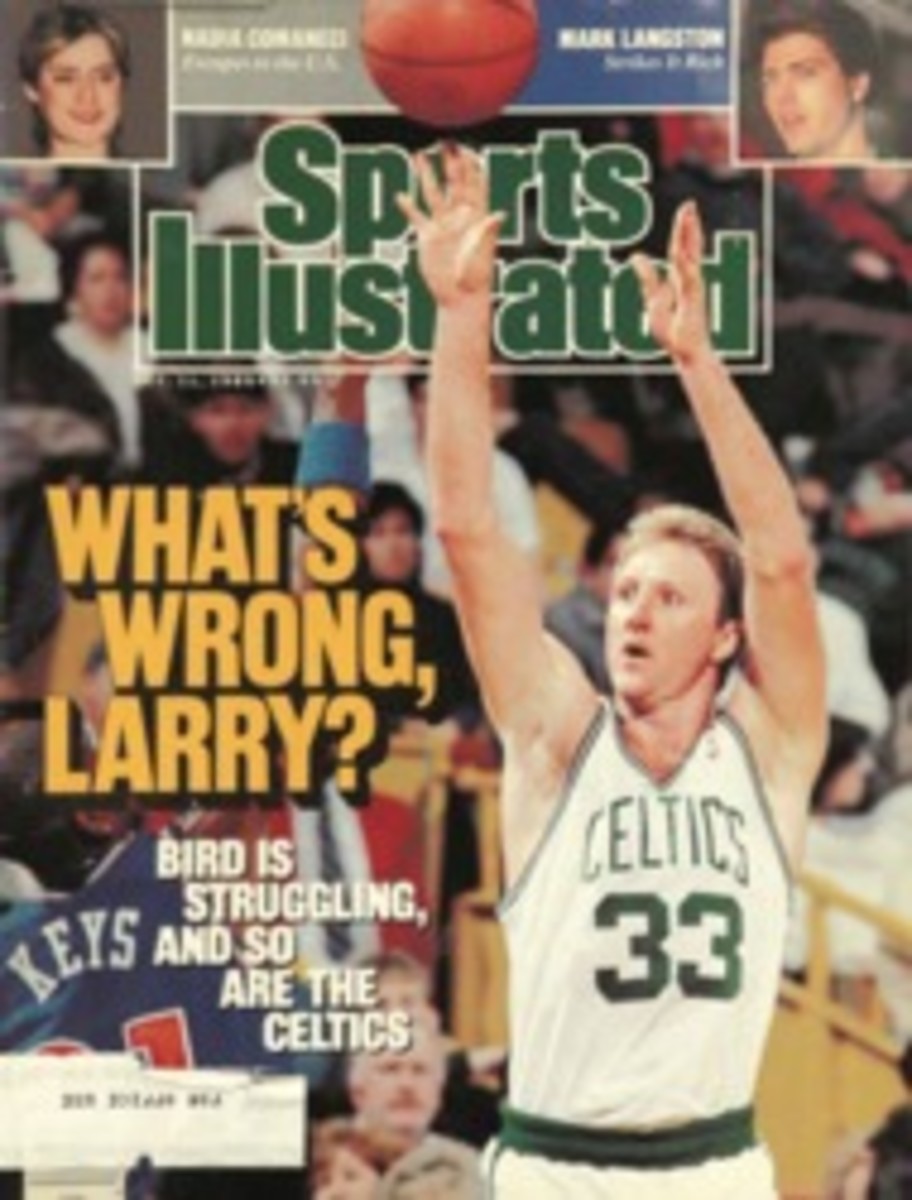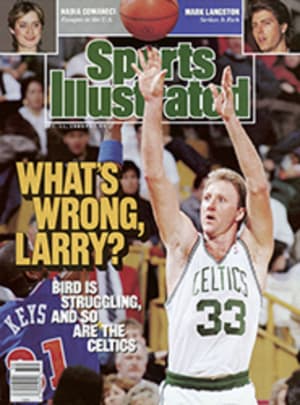
RICH MAN'S GAME
What kind of game is this, anyway? Even before Mark Langston signed his record five-year, $16 million contract with the California Angels last Friday (page 64), baseball's owners were on another spending spree, this time with Monopoly money. A three-year, $5.7 million deal with the New York Yankees for Pascual Perez? Why not? It's only paper. A three-year, $3.6 million pact with the Pittsburgh Pirates for Walt Terrell? Sure, he's a solid workhorse—and 18-34 over the last two years. And Cecilio Guante? The pitching-thin Texas Rangers released him at the end of the season. Maybe that's why the Indians were able to get the righthander at such a bargain-basement price: $650,000 for a one-year deal.
Make no mistake, collusion is dead, free agency is back, and the time has come when utility infielders drive Rolls-Royces and the superstars fly in private jets. Armed with bags of cash, the owners have abandoned the restraints—what they called "fiscal sanity" but arbitrators ruled to be collusion—that had deadened the free-agent market for most of the '80s. Back in February, Roger Clemens signed a three-year, $7.5 million contract with the Boston Red Sox that made him the highest-paid player in the game. Nine months later, he was seventh on the list and would almost certainly drop to ninth once free agents Mark Davis and Robin Yount sign on the dotted fine. Six days after Kirby Puckett became baseball's first Three Million Dollar Man by signing a three-year, $9 million deal with the Minnesota Twins on Nov. 22, Rickey Henderson agreed to a four-year, $12 million pact with the Oakland Athletics. Three days after Henderson signed, Langston landed his contract, the first five-year pact since Eddie Murray's $13 million contract with the Baltimore Orioles in September 1985. "It just makes you wonder where salaries would be right now if the owners hadn't colluded for five years," says agent Alan Hendricks, who has Davis and another megabuck free agent, Jeff Reardon, on the market this year.
"When salaries got to one million dollars [Dave Winfield broke that barrier in 1980 with his 10-year deal of at least $15 million with the Yankees], I said that was the top," says Toronto Blue Jay president Paul Beeston. "Then it hit two million. Now, who knows?" That's exactly what next year's free-agent class, which could include Don Mattingly, Eric Davis, Darryl Strawberry, Joe Carter, Ted Higuera and Danny Jackson, must be wondering.
Where is all the money for these new contracts coming from? For starters, each team will get more than $16 million next season from CBS and ESPN. The teams have also begun to reap big bucks from Major League Baseball's licensing programs. In addition, the revenue from local TV and radio contracts has skyrocketed for some teams, most notably the Yankees, who signed a 12-year, $500 million deal with Madison Square Garden's MSG Network last year. Still other teams, like the Red Sox, have begun to cash in on the luxury-box craze. Says one owner, "What all this spending shows is just how healthy the industry really is." It also shows that the owners, unlike many of their counterparts in the NFL, are unwilling to settle for profitable, noncompetitive parity. "The dynamics of the market are that clubs realize it's worth it to try to win," says agent Tom Reich. "Look at Oakland."
In 1985, when the owners agreed to open their books during contract talks with the Players Association, the Athletics' balance sheet was the prime evidence they used to show how badly some teams were doing. In 1983 and '84, the A's lost a total of $15.5 million. Over the next four years, the A's doubled their scouting budget, hired a new manager and coaching staff at top salaries and adopted aggressive marketing strategies. And it paid off. The A's developed into the best team in baseball and also one of the most profitable.
The money is there, and history shows that free agency has created better competition. In the six years before the Andy Messersmith decision—a ruling in December 1975 that ended baseball's reserve system and led to free agency—the A's, Orioles, Pirates and Cincinnati Reds won 18 of a possible 24 division titles. But in the last eight seasons no National League team has won back-to-back division races, and only one team has made consecutive World Series appearances—the A's in 1988 and '89.
Sometimes what goes around comes around. In 1987, Atlanta Braves general manager Bobby Cox reached an oral agreement with free-agent pitcher Bryn Smith for a reported one-year, $500,000 pact. But according to a source, Cox had to renege on the deal when the Player Relations Committee put pressure on him to abide by an owners' agreement not to outbid a free agent's previous team, if it had expressed interest in resigning him. So Smith was forced to return to the Montreal Expos at their price (a one-year contract for the minimum $62,500 plus incentives, which eventually earned him an additional $404,219). On Nov. 28, Smith signed with the St. Louis Cardinals for $6 million over three years. Not only that, but he is expected to reap another $500,000 in damages if arbitrator George Nicolau rules in favor of the players, as expected, in the 1987 collusion case, commonly referred to as Collusion III. Arbitrators have already ruled that the owners had colluded in the 1985 and '86 cases—Collusion I and II, respectively.
Back in the early days of free agency, the Yankees were the team that dominated the market, signing Catfish Hunter, Reggie Jackson, Rich Gossage, and Winfield. But owner George Steinbrenner has become the laughingstock of baseball, and many agents have begun to use him as a tool to jack up prices. When Steinbrenner signed Perez, a repeat drug offender with a 64-62 career record, for an absurdly inflated price, several rival general managers saw it as a thinly disguised attempt to push salaries so high that no one could match his offers for Langston and Mark Davis. But Langston ultimately spurned Steinbrenner, and Davis has so far avoided dealing with him.
In the late '70s and early '80s, other Eastern teams, not just the Yankees, were also big players in the free-agent market. The Red Sox were the first team to sign a post-Messersmith free agent when they nabbed Twins reliever Bill Campbell for $1,075 million over four years. The Philadelphia Phillies were a big-money club, too. But now, according to Expo general manager Dave Dombrowski, "It's hard for all East Coast clubs to compete with those from the Sunbelt, especially from California."
The Expos are in a particularly difficult situation. After the 1988 season, Montreal owner Charles Bronfman told Dombrowski to do anything he had to in order to win in a hurry. So Dombrowski traded away many of the club's promising young pitchers, including John Dopson, Brian Holman and Jeff Parrett, to beef up the lineup with Langston and other veterans. But the strategy didn't work. The Expos finished fourth in the National League East, and now they have lost Langston, Perez and Smith. Says Expo manager Buck Rodgers, "I guess no one wants to play in Cleveland or Montreal."
The Red Sox couldn't keep free agents Bruce Hurst or Nick Esasky from leaving town. And Boston is a big moneymaker; the Expos are not. "With all the talent we have in our farm system, we can rebuild and be respectable," says Expo vice-president Bill Stoneman. "But, frankly, one wonders what we can do in Montreal. We can only go so far."
Bronfman is reportedly so frustrated that he wants to sell the team, but there are no interested parties in Montreal. Don't be surprised if an investment group in Orlando or St. Petersburg makes a bid for the franchise after the first of the year. The Pirates, Indians (who have little chance of re-signing Carter), Reds (who could lose Eric Davis, Danny Jackson, John Franco and Tom Browning to free agency next November) and Tigers could also suffer a talent drain in the early '90s. "It's crazy the way these salaries have gone," says Dombrowski. "If someone had told me these figures in September, I'd have laughed. In time, the industry will pay."
However, as Reich points out, similar doomsday predictions have been made in the past, but the industry has gotten richer and richer, and the game has set attendance records for the last five years in a row. The market value of franchises has also climbed sharply in the last 10 years. Last summer, for example, George Argyros, who bought the Seattle Mariners for $13 million in 1981, sold them for $77 million—and they had never had a winning season. "The question is whether or not too much is based on the speculative values of teams," says one general manager. "Is a team worth a hundred or two hundred million dollars? That's what owners are gambling on, and like the gold market, it can collapse because of its artificiality."
One result of the lavish spending may be the avoidance of a strike. When Barry Rona stepped down last week as executive director of the Player Relations Committee, several general managers said they felt he was frustrated by his employers, who, on the one hand, were throwing millions at free agents and, on the other, asking him to get the Players Association to agree to a wage scale for players in their first six years based on a dubious set of statistics. One club president called the proposal "idiocy." And Hendricks says, "It is a pitifully veiled attempt to get rid of agents."
The owners appear confused about what they want from a new contract, which would replace the four-year Basic Agreement that expires Dec. 31, and it's going to be hard for them to cry poor when they're throwing so much money around. For their part, the players are happy with the status quo. They could well start the season without a new contract and agree not to strike, which would mean that the owners could not legally lock them out. At any rate, eventual agreement on a contract similar to the current one seems likely. As one general manager puts it, "[Commissioner] Fay Vincent is an entertainment guy who understands entertainment labor. The labor-management atmosphere is likely to improve."
Meanwhile, the play-money game goes on. Tony Pena had 37 RBIs last year? O.K., he's worth $6.4 million for three years to the Red Sox. Candy Maldonado hit .217? Fine, the Indians will give him $825,000 next year. Gary Pettis knocked in 18 runs all season? Then $2.66 million over three years from the Rangers should do him fine.
Step aside, Mr. Langston. The fun has just begun.
PHOTO
DAMIAN STROHMEYER
In February, Clemens became the highest-paid player, with an average annual salary of $2.5 million. By December he had fallen to seventh as the $3 million men arrived. For gems like American League MVP Robin Yount, how high is up?
PHOTO
JERRY WACHTER
[See caption above.]
PHOTO
BOB ROSATO/ALLSPORT USA
[See caption above.]
PHOTO
MICKEY PFLEGER
[See caption above.]
PHOTO
JOHN SWART/ALLSPORT USA
[See caption above.]
PHOTO ILLUSTRATION
OTTO GREULE/ALLSPORT USA
[See caption above.]
PHOTO
LONNIE MAJOR/ALLSPORT USA
Salaries have surged even for players with anemic statistics: Perez ($5.7 million/3 years) is 64-62 lifetime; Terrell ($3.6 million/3 years) has a lifetime ERA of 4.01; and Martinez ($1.75 million/2 years) is a career .249 hitter.
PHOTO
T.G. HIGGINS/ALLSPORT USA
[See caption above.]
PHOTO
BARBARA BOWEN/ALLSPORT USA
[See caption above.]
TWO ILLUSTRATIONS
ROGER CLEMENS
Total contract: $7.5M/3 years
$2.5M
BRET SABERHAGEN
Total contract: $8.9M/3 years
$2.97M
KIRBY PUCKETT
Total contract: $9M/3 years
$3M
RICKEY HENDERSON
Total contract: $12M/4 years
$3M
MARK LANGSTON
Total contract: $16M/5 years
$3.2M
PASCUAL PEREZ
1989 stats: 9-13, 3.31 ERA
$1.9M
WALT TERRELL
1989 stats: 11-18, 4.49 ERA
$1.2M
CARMELO MARTINEZ
1989 stats: .221, 6 HRs, 39 RBIs
$.875M

